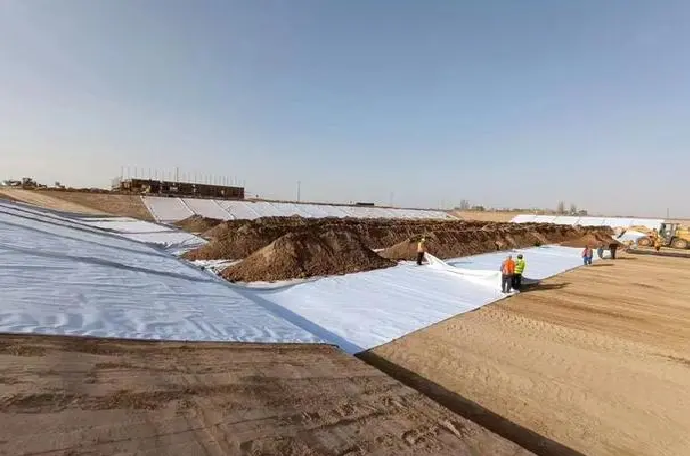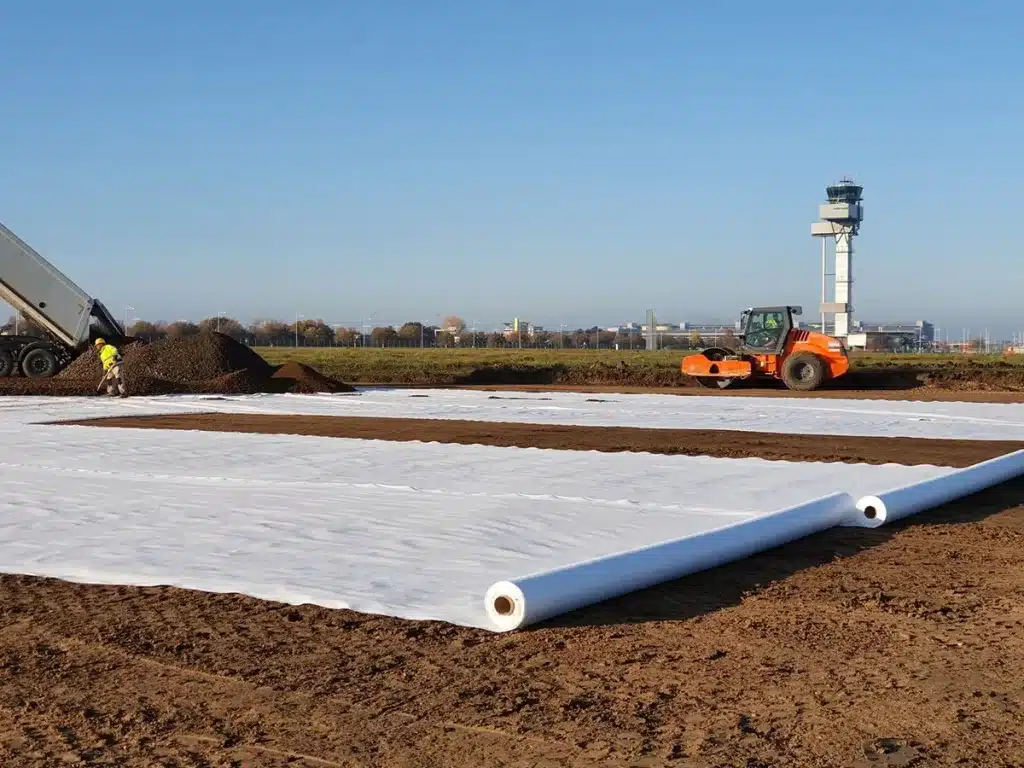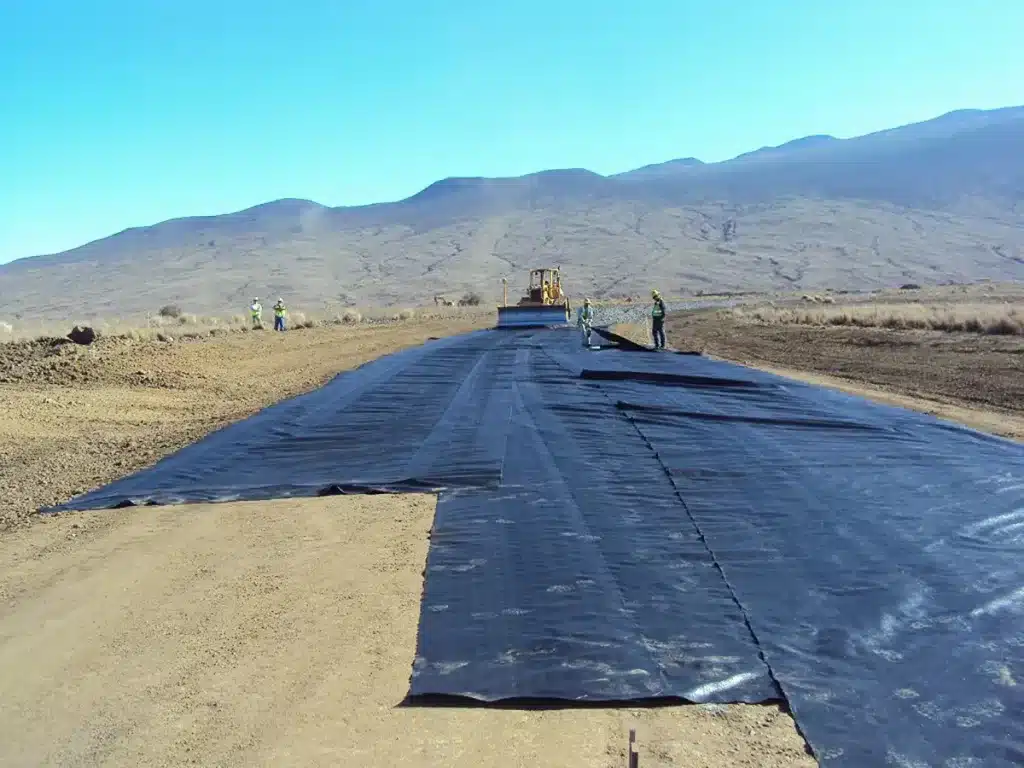+86-159 9860 6917
info@geofantex.com
geofantex@gmail.com
+86-400-8266163-44899
How Is Woven Polyethylene Fabric Manufactured?
- High Durability & Tear Resistance: Woven polyethylene fabric resists tearing, punctures, and abrasion, making it ideal for construction, agriculture, and industrial applications.
- Excellent Water Resistance: Its low moisture absorption and optional lamination provide reliable protection against rain, humidity, and ground moisture.
- UV Stability for Outdoor Use: With added UV stabilizers, the fabric maintains strength and flexibility under prolonged sunlight exposure, extending service life.
- Lightweight but Strong: Despite its high tensile strength, woven polyethylene fabric remains lightweight, reducing handling, transport, and installation costs.
- Flexible & Easy to Fabricate: The material can be cut, sewn, welded, or laminated, allowing customization for tarps, covers, bags, and liners.
- Chemical & Rot Resistance: Resistant to many acids, alkalis, and biological degradation, it performs well in harsh or contaminated environments.
- Cost-Effective Solution: Long service life, low maintenance, and competitive pricing make it an economical alternative to heavier traditional materials.
- Reusable & Recyclable: Polyethylene fabrics can be reused multiple times and are recyclable, supporting sustainability and waste reduction goals.
Woven polyethylene fabric combines strength, water resistance, UV protection, and flexibility in a lightweight, cost-efficient material—making it a preferred choice across construction, agriculture, packaging, and protective applications.

How is woven polyethylene fabric manufactured?
What Are the Benefits of Using Woven Polyethylene Fabric?
- High Durability & Tear Resistance :Woven polyethylene fabric resists tearing, punctures, and abrasion, making it ideal for construction, agriculture, and industrial applications.
- Excellent Water Resistance:Its low moisture absorption and optional lamination provide reliable protection against rain, humidity, and ground moisture.
- UV Stability for Outdoor Use:With added UV stabilizers, the fabric maintains strength and flexibility during prolonged sunlight exposure, extending service life.
- Lightweight but Strong:Despite its high tensile strength, woven polyethylene fabric remains lightweight, reducing handling, transport, and installation costs.
- Flexible & Easy to Fabricate:The material can be cut, sewn, welded, or laminated, allowing customization for tarps, covers, bags, and liners.
- Chemical & Rot Resistance:Resistant to many acids, alkalis, and biological degradation, it performs well in harsh or contaminated environments.
- Cost-Effective Solution:Long service life, low maintenance, and competitive pricing make it an economical alternative to heavier traditional materials.
- Reusable & Recyclable:Polyethylene fabrics can be reused multiple times and are recyclable, supporting sustainability and waste reduction goals.
In summary, woven polyethylene fabric combines strength, water resistance, UV protection, and flexibility in a lightweight, cost-efficient material—making it a preferred choice across construction, agriculture, packaging, and protective applications.

What are the benefits of using woven polyethylene fabric?
Woven polyethylene fabric offers several benefits, making it a popular choice for various applications. Here are some key advantages:
- Durability: Woven polyethylene fabric is highly durable and resistant to tearing, punctures, and abrasions. This makes it suitable for heavy-duty applications such as construction, agriculture, and industrial uses.
- Water Resistance: The fabric is inherently water-resistant, making it ideal for applications where moisture protection is essential, such as tarps, covers, and liners.
- UV Resistance: Many woven polyethylene fabrics are treated to resist UV degradation, which helps them maintain their strength and integrity when exposed to sunlight for extended periods.
- Lightweight: Despite its durability, woven polyethylene fabric is relatively lightweight, making it easy to handle, transport, and install.
- Flexibility: The fabric is flexible and can be easily cut, sewn, or welded to fit specific requirements. This versatility allows for a wide range of uses and customizations.
- Chemical Resistance: Woven polyethylene fabric is resistant to many chemicals, making it suitable for use in environments where exposure to harsh substances is a concern.
Overall, woven polyethylene fabric is a robust, versatile, and cost-effective material that meets the needs of many industrial, commercial, and agricultural applications.
Woven polyethylene fabric is a remarkable material that continues to shape various industries with its versatility, durability, and sustainability. From agriculture to construction, its applications are diverse and ever-expanding, driven by ongoing technological advancements and a growing emphasis on environmental stewardship. As we continue to unlock the potential of woven polyethylene fabric, its role in shaping the future of materials science remains promising.



Get Free Sample
We’ll respond as soon as possible(within 12 hours)






















